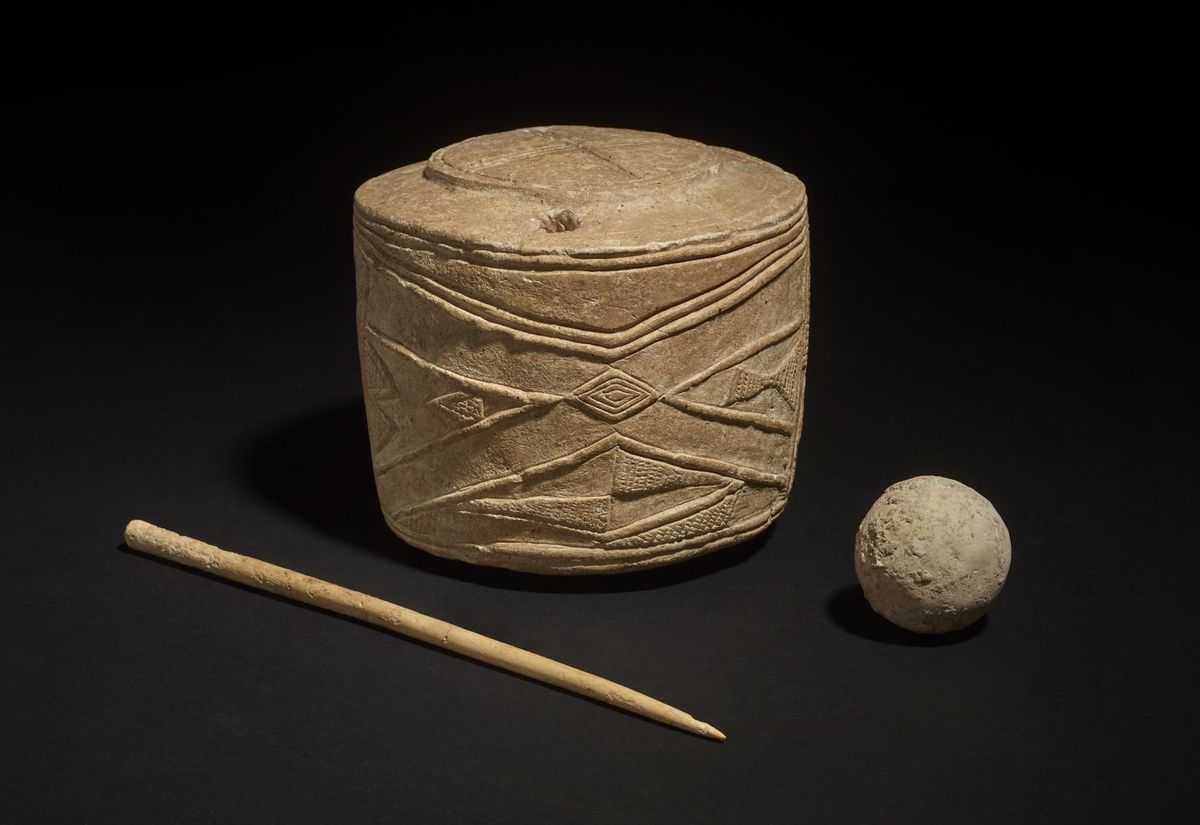Somewhere in East Yorkshire, near the village of Burton Agnes, a discovery was made in 2015 that the British Museum has now labeled the most important piece of British pre-historic art discovered in the last century. The intricate chalk sculpture, unearthed by Allen Archeology during routine excavation, was found to be 5,000 years old and will be unveiled to the public as part of the British Museum’s The world of Stonehenge exhibition, which opens 17 February.
“The sculpture is decorated with elaborate motifs that reaffirms a British and Irish artistic style that flourished at exactly the same time as Stonehenge was built,” according to a press release from the British Museum.

The Burton Agnes burial site Photo: Allen Archaeology
The artefact is similar to the Folkton drums, three barrel-shaped cylinders made of solid chalk which are believed to be sculptures or talismans meant to protect children. Like the Folkton drums, which were found at the burial site of a child, the Burton Agnes drum was found at the head a grave holding the remains of three children.
“To my mind, the Burton Agnes drum is even more intricately carved [than the Folkton drums] and reflects connections between communities in Yorkshire, Stonehenge, Orkney and Ireland,” says Neil Wilkin, curator of The world of Stonehenge at the British Museum. “Analysis of its carvings will help to decipher the symbolism and beliefs of the era in which Stonehenge was constructed. We are honoured that the British Museum will be the first place the public will be able to see this important object, and that they will see it alongside 430 other ancient items telling the spectacular story of Stonehenge and the vibrant world in which it was built.”


